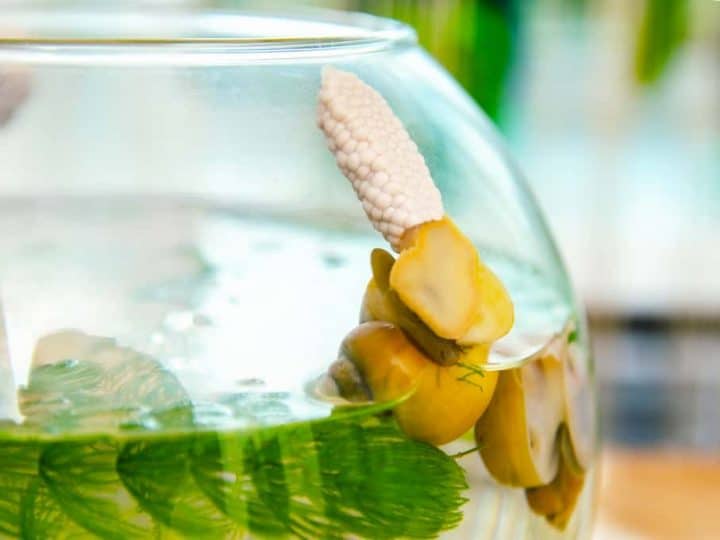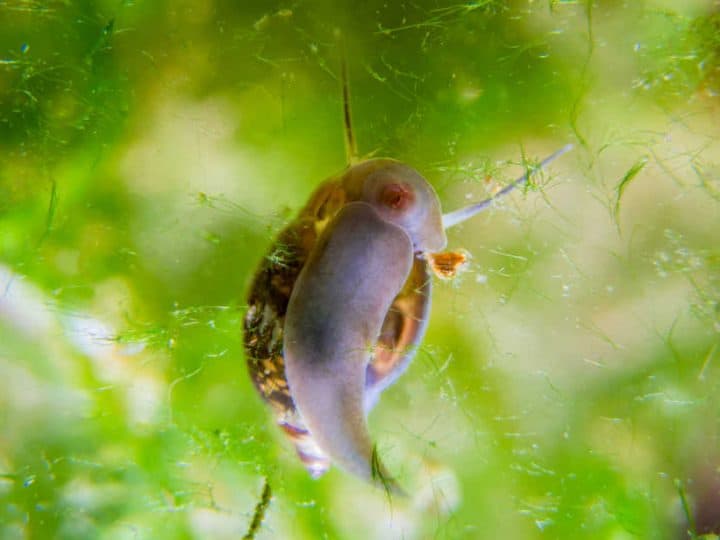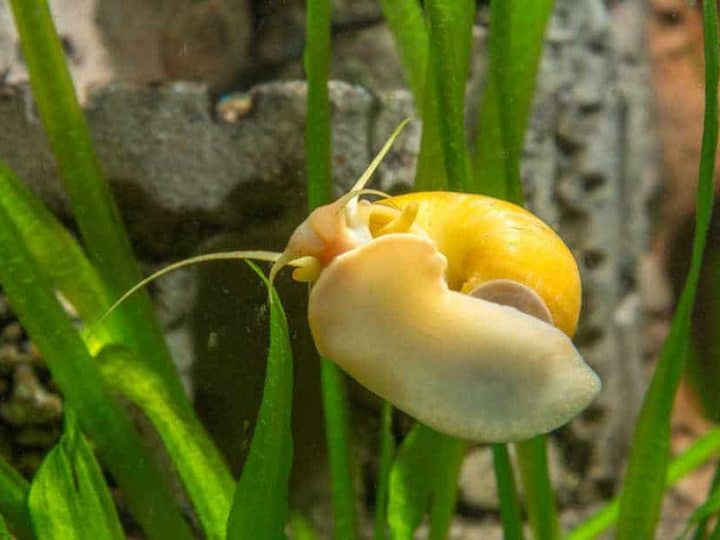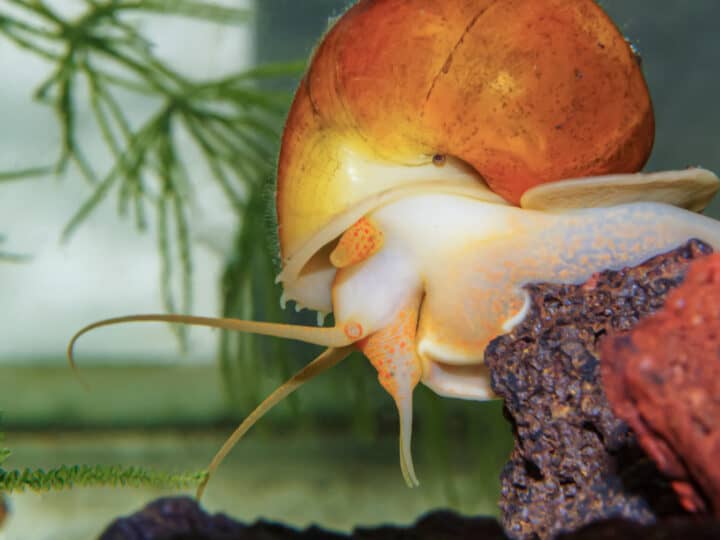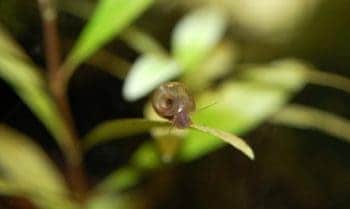Have you ever noticed the mysterious, sketchy-looking clump of things appearing in your tank? They could very well be snail eggs! But fret not — I’ll share with you some advice based on my experience in removing snail eggs from an aquarium.
Quick Answer
To remove snail eggs from aquarium glass or plants, use a thin card (like a bank card) to scrape them off the affected area. You may also want to consider using a siphon to suck the snail eggs and transfer them to a bucket.
Apart from addressing the issue of concern above, I’ll also touch on a few more related topics in the following paragraphs. Keep reading so you’ll also learn the following:
- Which aquarium dwellers will feed on snail eggs
- How to identify snail eggs
- How long it takes for snail eggs to hatch
- Are snails bad for an aquarium
How To Get Rid of Snail Eggs in an Aquarium
You might have found some weird-looking clusters on your aquarium glass. They might hide in some hidden places, like underneath the plant leaves or at the back of your aquarium decorations.
So what are they exactly?
My best guess is that they’re snail eggs. Assuming you’re unwilling to maintain a snail population in your tank, I suggest eliminating those eggs quickly. Do not use chemicals.
You can use a thin yet flexible card (think a bank card or a name card). Use it to scrape the eggs off the surface gently.
Alternatively, you can use a siphon to vacuum the affected area (i.e., on the aquarium glass or the leaf of your live plants) and suck them up to a bucket. This prevents them from settling elsewhere, especially in less visible areas.
Why Should You Get Rid of the Snail Eggs?
At this point, you might wonder why you need to get rid of the snail eggs at all. The answer to this is simple: snail infestation.
You might not know what a snail infestation means yet — but trust me — you don’t want that in your tank. The most severe snail infestation I’ve ever seen was where the snail population is significantly more visible than the aquarium substrate.
That’s when you know the infestation has gone out of control.
Snails are detritivores, meaning they feed on detritus. They’re essentially great aquarium dwellers, but you might encounter some issues when their population has gone out of control.
You should get rid of the snail eggs to prevent them from hatching, growing only to multiply so rapidly that eventually, they’ll run out of algae and detritus to eat. As a result, the snails will start to feast on your live plants. Plus, they may clog your water filters.
In short, you should always aim to nip the problem in the bud by thoroughly checking for snail eggs and snails and removing them before it’s too late.
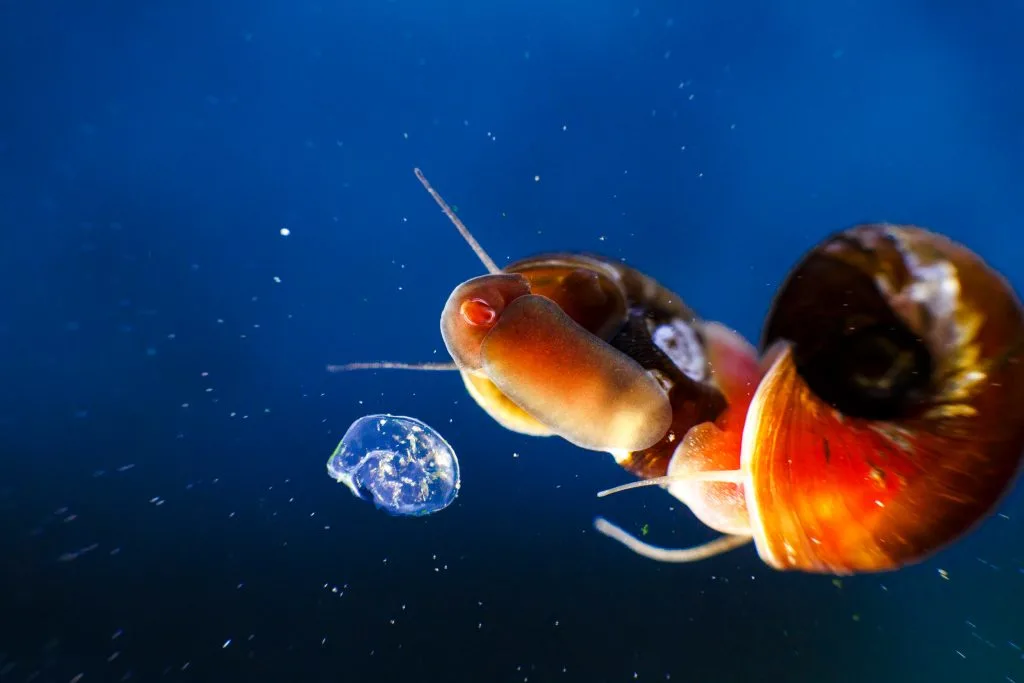
How To Dispose of the Snail Eggs
Since you should remove these eggs, remember to carry out the disposal process as humanely as possible, for they’re also living beings.
One way of doing this is to freeze the snail eggs removed from your tank before tossing them away.
Note: If you find Nerite Snail eggs in your freshwater aquarium, you need not worry about them overpopulating in your tank! That’s because they can’t hatch unless in brackish or saltwater.
According to this survey by J. Wetlands Biodiversity in 2020, the Nerite snails are very sensitive to the degree of pollution and, thus, cannot tolerate a highly polluted environment.
Unhatched Nerite Snail eggs are white-colored and shaped like a small oval. They’re often found on the surface of tank decorations.
However, these eggs are more challenging to remove than the other species of snail eggs because they can stick to a surface quite well.
If all the methods suggested above don’t work, I advise you to try scraping them off with a razor blade.
Snail Eggs Hitchhike Into Your Tank: Remove Them!
Suppose a snail outbreak has occurred despite never introducing snails to your tank; chances are the eggs have “hitchhiked” into the aquarium through the live plants you bought from the stores.
For the benefit of those suffering from this issue, I’ve listed 2 steps for preventing such a situation.
The steps are as follows:
1. Quarantine New Plants
Before placing any new store-bought plants in your tank, be sure to quarantine them in a separate tank. I recommend doing so even if the store assistant guarantees the plants are snail-free — it’s always better safe than sorry.
You should place the live plants in a closed tank and observe the plants for at least 2 weeks. If you found snail eggs, scoop them up using the methods I’ve elaborated on in the above paragraphs.
After the quarantine, rinse the plants with clear water, and voila — they’re now pest-free and can be safely introduced to your tank!
2. Rinse the Plants in a Bleach Solution
The second precautionary step you can take is to perform a bleach dip on the new plants to dispose of snails and snail eggs before they start to multiply in your aquarium.
As the name itself suggests, a bleach dip is prepared by mixing one part chlorine bleach with 20 parts of water. Subsequently, soak the plants in the solution for no more than 2 minutes and rinse them off with dechlorinated water.
While performing a bleach dip, be extra cautious as the bleach is corrosive to surfaces and may cause irritation if it comes into direct contact with your skin.
Make sure to wear a glove!
You might think that a bleach dip could be harmful and toxic to your plants and therefore attempt other methods to “sterilize” your new live plants.
In this regard, I’ve seen people giving suggestions, such as rinsing the plants in a salt solution. Sure, it can be effective against snail eggs, but from my experience, a bleach dip is a far more superior and fool-proof method to ward off the hitchhiking eggs and snails.
What Eats Snail Eggs in a Fish Tank?
An organic way of getting rid of snails and snail eggs in your fish tank is to introduce their natural predators.
That being said, I’d implore you to do some due diligence before adding new fish to your aquarium; taking care of a fish is no short-term matter.
Nevertheless, you may take this article as the one-stop-shop for your snail-related problems, as I’ll show you a few of my favorite additions to the tank, which helps with snail control.
For starters, many kinds of fish will eat snails like catfish, pufferfish, loaches, and cichlids, just to name a few.
You may consider these fish, even Assassin Snails, as long as they’re compatible with your aquarium and will not pose a threat to the existing community.
My top pick will always be the Clown Loaches, as I maintain a larger tank (a 100 gallons or 378.54 liters tank) to fit my loaches even after they hit maturity. I love them because they’re very active snail-eaters since they enjoy spending most of their time in my tank’s mid and lower levels.
If you have a smaller tank, Assassin Snail may be an excellent choice to eliminate pest snails. Click on this article if you wish to find out more about the aquarium dweller that preys on pest snails.
So far, I’ve never witnessed my Clown loaches chowing down any unhatched snail eggs. As such, if you’re the type who prefers to get to the root of the problem by eliminating snails before they hatch, you might want to check out Cory Catfish and Guppies, as they’re known to enjoy eating snail eggs.
These fish may eat snail eggs quicker than they do on snails.
What Do Snail Eggs Look Like in a Fish Tank?
Snail eggs usually look like clumps that may attach themselves to the aquarium. Some snail eggs appear covered in a jelly-like translucent material, typically found under plant leaves.
The appearance of snail eggs may vary by species. Some don’t lay eggs but give birth!
The most common type of snail eggs you find at or above the waterline are laid by Mystery Snails (Pomacea bridgesii, a kind of Apple Snail).
As shown in the picture above, the Mystery Snail eggs aren’t, in fact, “mysterious” — these eggs are packed in a big clump and pinkish.
Since they often adhere to the rim of your aquarium glass or anyplace above water level, you can easily remove them by scooping them up with a card.
While you can spot the Mystery Snail eggs without putting much effort, the same cannot be said for eggs laid by the other snail species.
For instance, the Ramshorn Snail will lay eggs just about anywhere they can get to.
The above picture shows a cluster of Ramshorn Snail egg sacs. The eggs themselves are brownish and are covered in a jelly-like translucent material that protects them.
These eggs are often found under the water surface and underneath plant leaves, hence requiring extra care to spot and remove them — the fact that they’re laid in small clusters doesn’t help either.
Apart from the two types of snail eggs discussed above, it would be best to look out for Malaysian Trumpet Snails (MTS). The tiny creatures are notorious for hitchhiking on the substrate and decoration products you bought from stores and populating your tank in a relatively rapid manner.
Do note that the MTS doesn’t lay eggs but gives birth to live snails.
I’m pretty confident that you can identify their babies as they look like the exact copies of their parents.
How Long Do These Snail Eggs Take to Hatch?
Snail eggs can take between 1 and 5 weeks to hatch, depending on the species. Other factors can also affect their hatching periods, such as water pH and temperature.
I noticed that Ramshorn snail eggs have one of the quickest gestation periods: they can hatch in a week since they were laid.
On the other hand, the Mystery snail eggs can take up to 2 to 4 weeks to hatch.
Though usually most freshwater snail eggs will hatch within 2 to 5 weeks, you might find the Assassin Snail eggs to hatch only after two months of gestation period!
Having said that, the snail eggs that you’ve just discovered will only hatch if they’ve been fertilized. You can tell fertilized eggs from those unfertilized ones by their appearance – the fertilized egg cluster will change color after some time.
Are Snails Bad for an Aquarium?
Snails are generally suitable for your aquarium. When their population is controlled, they can be beneficial: they add to the biodiversity of your tank, turn the substrate and help with algae control.
Some of the most fantastic additions to your tank would be:
- Apple Snails/Mystery Snails. They’re probably the best freshwater aquarium snails you can get. They feast on detritus and algae; their population is relatively easy to control (by adjusting the water temperature to 70-75°F or 21.11-23.89°C). They’re available in a wide range of colors.
- Nerite Snails. The most significant advantage about adding Nerite snails to your tank is that they’ll never overpopulate your tank, for reasons discussed in the above subsection.
- Trumpet Snails. The Trumpet Snails are an excellent burrower; thus, they may help prevent potential anaerobic pocket issues often found in deep sand/gravel beds.
Nevertheless, I’d advise that you look out for snails notorious for harming other inhabitants in your tank, such as the Assassin Snails, which may eat the smaller snails.
You might also want to avoid the pond snails, which have developed an appetite for live plants and are bound to overpopulate your tank.
Final Thoughts
Snail eggs usually end up in your tank when you bring home infested live plants and decorations you bought from the store. You can easily scrape the snail eggs off with a thin, flexible card or vacuum them using a siphon.
Besides checking your tank for snail eggs, you should always give new plants a bleach dip or quarantine them for at least a few weeks before introducing them to your tank.
The key is to identify the snail eggs before they hatch — you wouldn’t want a snail infestation in your tank as these creatures can multiply in numbers rapidly!

